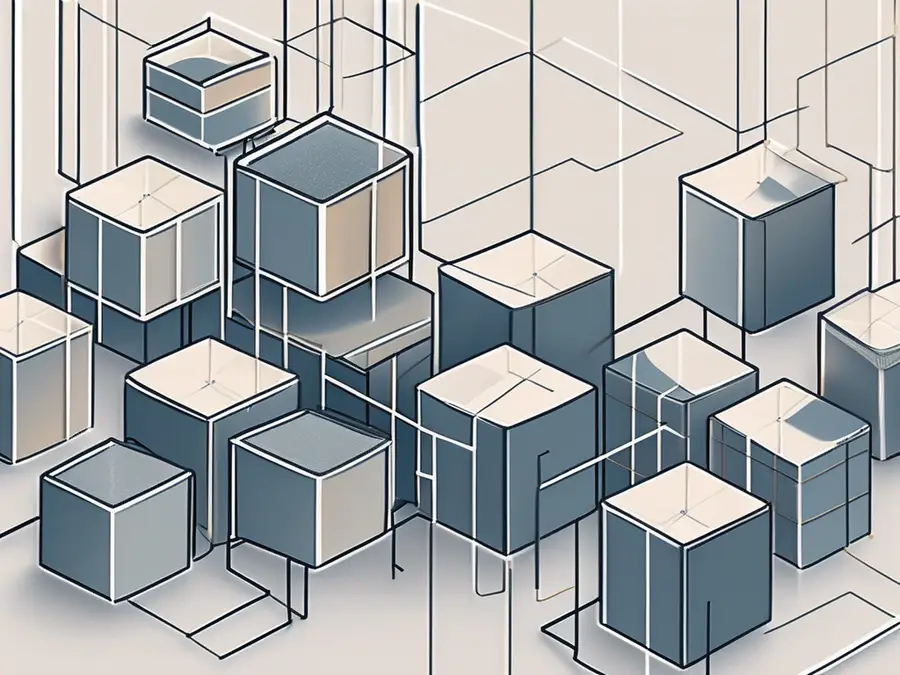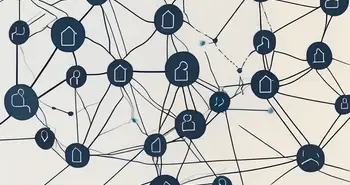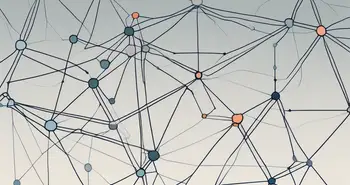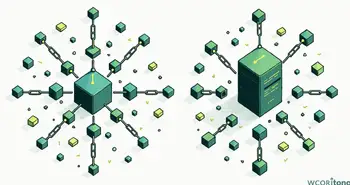Decentralized Storage Demystified: A Full Exploration

Decentralized storage is revolutionizing the way we store and access our data. With its numerous advantages over traditional centralized storage, it's no wonder that more and more individuals and businesses are turning to this innovative solution. In this ultimate guide, I will take you through all the key aspects of decentralized storage, explaining its concept, importance, key features, working mechanism, and how it compares to centralized storage. Furthermore, I will provide valuable insights on implementing decentralized storage and offer expert advice on choosing the right platform for your needs.
Understanding Decentralized Storage
The Concept of Decentralized Storage
Decentralized storage fundamentally shifts the way data is stored and retrieved. Unlike centralized storage, where data is stored on a single server or a small number of servers, decentralized storage distributes data across a network of nodes. In this network, each node stores a small portion of the data, ensuring redundancy and fault tolerance.
Imagine a digital jigsaw puzzle, where each piece is securely stored by a different node. When you need to access your data, the decentralized storage system retrieves all the pieces and assembles them for you. This decentralized approach not only enhances security but also greatly improves accessibility and speed.
The Importance of Decentralized Storage
Decentralized storage addresses a number of crucial concerns in today's digital landscape. One of the primary advantages is enhanced data security and privacy. With traditional centralized storage, data is vulnerable to hacking, breaches, and unauthorized access. Decentralized storage, on the other hand, employs advanced encryption techniques and consensus algorithms to ensure that your data remains secure and private.
Accessibility and speed are also key benefits of decentralized storage. In a decentralized system, data is distributed across multiple nodes, eliminating the risk of a single point of failure. This means that even if one or more nodes go offline, your data remains accessible. Additionally, decentralized storage systems leverage parallel processing, resulting in lightning-fast data retrieval and transfer speeds.
Another advantage is cost-effectiveness. Traditional centralized storage requires expensive infrastructure and maintenance, which often translates to high costs for users. Decentralized storage, with its distributed nature, reduces infrastructure costs and eliminates the need for large storage centers. This allows decentralized storage providers to offer more affordable pricing options, making it an attractive solution for individuals and businesses alike.
Furthermore, decentralized storage promotes data sovereignty. With centralized storage, your data is typically stored in a specific jurisdiction, subject to the laws and regulations of that jurisdiction. However, decentralized storage allows you to choose where your data is stored, giving you greater control over your own information. This is particularly important for individuals and organizations that operate in multiple countries and need to comply with different data protection laws.
In addition to data sovereignty, decentralized storage also fosters community collaboration. By participating in a decentralized storage network, individuals and organizations become part of a larger community that collectively contributes to the storage and retrieval of data. This collaborative approach not only strengthens the network's resilience but also encourages knowledge sharing and innovation among participants.
Moreover, decentralized storage has the potential to revolutionize the way we think about data ownership. In a centralized storage model, data is often owned and controlled by a single entity, which can lead to issues of data monopolies and concentration of power. Decentralized storage, on the other hand, empowers individuals and organizations to have greater control over their own data, reducing the risk of data abuse and promoting a more equitable distribution of data ownership.
Key Features of Decentralized Storage
Data Security and Privacy
Data security and privacy are paramount in decentralized storage systems. These systems leverage advanced encryption algorithms to protect your data from unauthorized access. Additionally, your data is fragmented and distributed across multiple nodes, ensuring that even if one or more nodes are compromised, the complete data remains secure and inaccessible.
Accessibility and Speed
Decentralized storage offers unparalleled accessibility and speed. With your data distributed across multiple nodes, you can access it from anywhere in the world. Even if one or more nodes are temporarily offline, your data remains accessible. Moreover, the parallel processing capabilities of decentralized storage systems enable lightning-fast data transfer and retrieval, ensuring that you can quickly access, modify, and share your data.
Cost-Effectiveness
Cost-effectiveness is another major advantage of decentralized storage. By eliminating the need for large centralized storage centers and expensive infrastructure, decentralized storage providers can offer more affordable pricing options. This makes it a cost-effective solution for individuals, small businesses, and enterprises alike.
How Decentralized Storage Works
The Role of Blockchain
Blockchain technology plays a crucial role in decentralized storage. It ensures the immutability and integrity of your data by utilizing cryptographic hashing and consensus algorithms. When you upload data to a decentralized storage network, it is broken down into chunks and encrypted. These encrypted chunks, along with their corresponding metadata, are stored on the blockchain, creating a decentralized ledger of data storage transactions.
Data Fragmentation and Distribution
In decentralized storage, your data is fragmented into smaller chunks and distributed across multiple nodes. This fragmentation ensures that no single node holds the complete data. When you retrieve your data, the decentralized storage system gathers the necessary chunks from different nodes, reconstructs the full data, and presents it to you. This distributed approach enhances fault tolerance, as the loss of a single node does not result in the loss of your complete data.
Comparing Centralized and Decentralized Storage
Control and Ownership
In centralized storage systems, you relinquish control of your data to a central authority. This raises concerns regarding data ownership and control. On the other hand, decentralized storage systems empower you with full ownership and control of your data. By leveraging encryption and blockchain technology, decentralized storage ensures that you are the sole owner of your data, putting you in charge of its storage, access, and sharing.
Scalability and Performance
Traditional centralized storage often faces scalability and performance challenges as the amount of data grows. Scaling storage infrastructure requires significant investment and can result in performance bottlenecks. Decentralized storage, on the other hand, effortlessly scales as the network expands. With its distributed nature, a decentralized storage system can easily handle large volumes of data without compromising performance.
Implementing Decentralized Storage
Choosing the Right Decentralized Storage Platform
When implementing decentralized storage, it's crucial to choose the right platform that aligns with your specific needs. Consider factors such as data security, accessibility, speed, cost-effectiveness, and scalability. Evaluate different platforms, their features, reputation, and community support. Additionally, explore user reviews and testimonials to gauge the satisfaction levels of existing users. Taking these steps ensures that you select a decentralized storage platform that best suits your requirements.
Transitioning from Centralized to Decentralized Storage
Making the transition from centralized to decentralized storage can be a smooth and seamless process if done correctly. Start by evaluating your existing storage infrastructure and identifying the data that can be migrated to a decentralized storage system. Develop a comprehensive migration plan and consider potential challenges such as data compatibility and integration. Ensure that you have the necessary resources and expertise to smoothly transition to decentralized storage, and leverage the assistance of experts if needed.
FAQ
What is decentralized storage?
Decentralized storage is a paradigm shift in data storage and retrieval. It distributes data across a network of nodes, ensuring redundancy, fault tolerance, and enhanced security and privacy.
Why is decentralized storage important?
Decentralized storage addresses crucial concerns such as data security, accessibility, speed, and cost-effectiveness. It empowers individuals and businesses by giving them full ownership and control of their data.
How does decentralized storage compare to centralized storage?
Decentralized storage offers advantages such as greater control and ownership, scalability, and enhanced performance. It eliminates the risks of a single point of failure and enables lightning-fast data access and retrieval.
How do I implement decentralized storage?
To implement decentralized storage, carefully choose a platform that meets your specific needs and consult user reviews. Plan the transition from centralized to decentralized storage, ensuring compatibility, and seek expert assistance if necessary.
As an expert in decentralized storage, I can attest to the transformative power it holds. I have seen individuals and businesses reap the benefits of enhanced security, accessibility, and cost-effectiveness. When choosing a decentralized storage platform, I advise considering factors such as data privacy, scalability, and community support. Additionally, don't underestimate the importance of planning and expert assistance when transitioning from centralized to decentralized storage.In conclusion, decentralized storage is a game-changer in the digital era. Its ability to protect data, ensure accessibility, and reduce costs is invaluable. By understanding its concept, key features, working mechanism, and implementation methods, you can leverage the full potential of decentralized storage and take your data management to new heights.
Ready to embrace the future of digital asset management with the same innovative spirit as decentralized storage? Look no further than Morpher, the revolutionary trading platform that harnesses blockchain's power to offer you a seamless and cost-effective trading experience. With Morpher, you can diversify your portfolio across various asset classes, enjoy zero fees, infinite liquidity, and the freedom of fractional investing. Take control of your investments with the secure Morpher Wallet, and if you're feeling bold, leverage your trades up to 10x. Don't miss out on this unique trading experience. Sign Up and Get Your Free Sign Up Bonus today, and join the community shaping the future of trading.

Disclaimer: All investments involve risk, and the past performance of a security, industry, sector, market, financial product, trading strategy, or individual’s trading does not guarantee future results or returns. Investors are fully responsible for any investment decisions they make. Such decisions should be based solely on an evaluation of their financial circumstances, investment objectives, risk tolerance, and liquidity needs. This post does not constitute investment advice.

Painless trading for everyone
Hundreds of markets all in one place - Apple, Bitcoin, Gold, Watches, NFTs, Sneakers and so much more.

Painless trading for everyone
Hundreds of markets all in one place - Apple, Bitcoin, Gold, Watches, NFTs, Sneakers and so much more.









